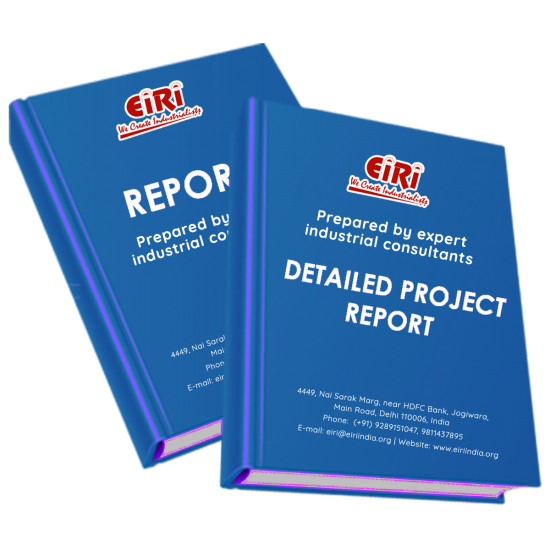BIOMASS BRIQUETTES (BAMBOO/WOOD CHIPS)
The project report includes Present Market Position and Expected Future Demand, Market Size, Statistics, Trends, SWOT Analysis and Forecasts. Report provides a comprehensive analysis from industry covering detailed reporting and evaluates the position of the industry by providing insights to the SWOT analysis of the industry.
We can prepare PROJECT REPORT as per your INVESTMENT PLAN for BANK LOAN REQUIREMENT and INDUSTRY ANALYSIS. All reports are prepared by highly qualified consultants and verified by a panel of experts.
Have Query? Click Here to Chat
Industry Expert is Online, Chat with him for more detail.

Briquetting is the technology to convert all types of agricultural and forestry waste into solid fuel. Briquettes are formed in cylindrical logs using high mechanical pressure without the use of chemical or binder. The product is a replacement to conventional fossil fuels and can be used across various manufacturing industries such as boilers, furnaces and kilns. Bio-Briquette is an eco-friendly solid biofuel which helps to reduce pollution, contributing to greener environment and save worthy foreign exchange. Briquetting works on the basic concept of “Wealth from Waste”. The briquettes are used for energy generation helping farmers to earn money from the waste. Briquetting of residues takes place with the application of pressure, heat and on the loose materials to produce the briquettes. No addition of any binder / chemicals is required so it is 100 % natural.
Fuel is the primary need for any country that whose backbone lies in the Industrial sector. More and more exhaustible sources of energy are diminishing each day. As a result, there is an immediate need to adopt new sources of energy which can help sustain the economic growth without any negative repercussions.
India has approximately 141 million hectares of arable land and agricultural output is around 800 million tones, which in itself generates 750 million tones waste. Even after deducting 450 million tones, which is used as fodder, 300 million tones could be used for biomass generation. Crop residues which are not used as animal fodder, such as cane trash, paddy straw, coconut stalks, branches and mustard waste, are estimated to total around 75 million tons per annum.
All the biomass and wood wastes are collected in large storage units and are recycled to produce solid fuel that can be used to heat industrial boilers. This is a renewable source of energy and is perfect in countries that produce tones of agriculture and forest waste each year. Every year millions of tons of agricultural waste are generated. These are either non-used or burnt inefficiently in their loose form causing air pollution. Handling and transportation of these materials is difficult due to their low bulk density. These wastes can provide a renewable source of energy by converting into high-density fuel briquettes without addition of any binder.
Not only does it put the agro-forest waste to good use, but it also becomes a source of revenue and saves the Global environment by producing clean and green energy.
The advantages of biomass briquetting are by no means limited to its use in modern industrial plants or solid fuel boilers. Indeed, in developing countries a far bigger percentage of the populations cover their energy needs with biomass alone, where their primary need is for heat energy for cooking and heating. International development cooperation has accordingly long been focused on improving the basic energy supply in many countries around the world. It is notable that biomass briquettes have played a bigger part in many projects over recent years, such as those for distributing better stove technologies, for example. Next to adapted cooking behaviors and improved cooking appliances, the fuel can play one important role in improving the overall situation of households. Biomass briquettes can be produced out of many field or process residues and burning them in cooking appliances instead of traditional fuels as logged and collected wood or charcoal can be an interesting alternative for business makers but also for fuel clients.
A Briquetting machine allows you to compress wastes like sawdust, chips, sugarcane bagasse and other agro-wastes into briquettes that are environmental friendly and have high calorific value. Burning briquettes as a fuel completes a natural cycle; on combustion they only release as much carbon dioxide back in the atmosphere as was originally absorbed by the growing tree during photosynthesis. Biomass briquettes can be used for power generation or for thermal application but mostly they are used for thermal application in industries replacing conventional fuel.
At present two main high pressure technologies: ram or piston press and screw extrusion machines, are used for briquetting. While the briquettes produced by a piston press are completely solid, screw press briquettes on the other hand have a concentric hole which gives better combustion characteristics due to a larger specific area. The screw press briquettes are also homogeneous and do not disintegrate easily. Having a high combustion rate, these can substitute for coal in most applications and in boilers.
Briquettes have high specific density (1200 Kg/m3) and bulk density (800 Kg/m3) compared to 60 to 180 Kg/m3 of loose biomass. These can stand the ardors of long distance transport. Loading/unloading and transportation costs are much less and storage requirement is drastically reduced. Compared to fire wood or loose biomass, briquettes give much higher boiler efficiency because of low moisture and higher density.
It is intended to prepare a Feasibility Report to install 1200Tons/Year Biomass Briquettes (Bamboo/Wood Chips) production facility as a Green Field Project.



